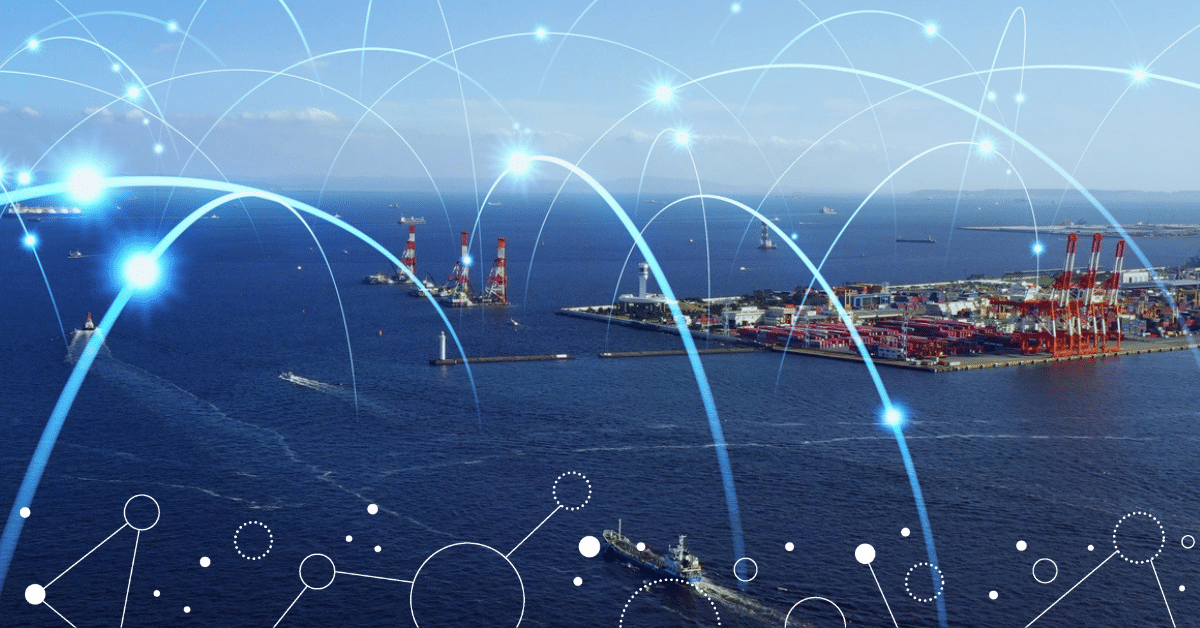Navigating the Coast Guard’s Maritime Cybersecurity Rule: How Asimily Enables Compliance

The maritime industry faces a new era of cybersecurity requirements. On July 16, 2025, the U.S. Coast Guard’s final rule on Cybersecurity in the Marine Transportation System took effect, fundamentally transforming security standards for vessels and marine facilities nationwide. This regulation establishes cybersecurity requirements for critical infrastructure owners and operators of regulated entities, including U.S.-flagged vessels, Outer Continental Shelf facilities, and facilities regulated under the Maritime Transportation Security Act of 2002.
For maritime operators already navigating complex operational challenges, these new requirements represent both a significant compliance burden and an opportunity to strengthen their cybersecurity posture. This is where Asimily’s next-generation cyber asset and exposure management platform becomes an invaluable tool.
Understanding the Phased Implementation
The regulation will be introduced in stages over the next three years, with certain provisions taking effect immediately. The timeline breaks down into three critical phases:
Immediate (July 16, 2025): All regulated entities are required to report certain cyber incidents to the National Response Center. This immediate reporting requirement creates the first compliance challenge, as organizations must quickly establish incident detection and reporting processes.
Phase 1 (January 12, 2026): All critical infrastructure owners and operators (any personnel with access to information technology or operational technology systems must complete cybersecurity training. This training must cover recognizing, detecting, and circumventing cybersecurity threats, as well as procedures for reporting cyber incidents.
Phase 2 (July 16, 2027): All regulated entities must designate a Cybersecurity Officer responsible for overseeing cybersecurity implementation and incident response, conducting a Cybersecurity Assessment to identify vulnerabilities and evaluate system resilience, and submitting a Cybersecurity Plan to the Coast Guard for approval.
The Compliance Challenge: Complex Requirements
The new rule introduces several technical requirements that many maritime organizations will find challenging to implement without specialized tools. The Cybersecurity Plan must include seven account security measures, four device security measure requirements, and two data security measure requirements.
Key technical requirements include:
- Maintaining an accurate inventory of network-connected systems, including critical IT and OT systems
- Developing and documenting network maps and OT device configuration information
- Ensuring logs are securely captured, stored, and protected
- Deploying effective encryption to maintain the confidentiality of sensitive data
- Implementing multifactor authentication on password-protected IT and remotely accessible OT systems
- Applying the principle of least privilege to administrator accounts
The Coast Guard expects that reportable cyber incidents will be reported to the National Response Center only by those entities not already required to report cyber incidents under existing regulations. However, this creates confusion, as organizations may face multiple reporting requirements across different federal agencies.
How Asimily Addresses Maritime Cybersecurity Compliance
Asimily’s platform directly addresses the most technically demanding aspects of the Coast Guard’s cybersecurity requirements, providing maritime operators with automated, continuous compliance capabilities.
Automated Asset Discovery and Inventory Management
One of the foundational requirements of the new rule is maintaining an accurate inventory of network-connected systems. Manual inventory processes are time-consuming, error-prone, and quickly become outdated in dynamic maritime environments where devices are frequently added, removed, or modified.
Asimily’s platform automatically discovers and inventories all connected devices across IT and OT networks, including IoT devices, medical equipment on vessels, industrial control systems, and networked sensors. This continuous discovery ensures that your asset inventory remains current, meeting the Coast Guard’s requirement for accurate documentation while eliminating the burden of manual tracking.
Vulnerability Assessment and Risk Prioritization
The Cybersecurity Officer must conduct a Cybersecurity Assessment to identify vulnerabilities and evaluate system resilience. For organizations managing hundreds or thousands of connected devices across multiple vessels or facilities, this represents a massive undertaking.
Asimily continuously scans all connected assets for known vulnerabilities, providing a comprehensive risk assessment that identifies critical weaknesses before they can be exploited. The platform correlates vulnerability data with device behavior, network activity, and threat intelligence to prioritize remediation efforts based on actual risk rather than theoretical threats.
This capability is particularly valuable for meeting the regulation’s requirement to ensure patching or implementation of documented compensating controls for known exploited vulnerabilities in critical IT or OT systems. Asimily identifies which vulnerabilities pose the greatest risk and provides actionable remediation guidance.
Comprehensive Risk Mitigation and Cyber Incident Response Planning
One of the most critical aspects of the Coast Guard’s cybersecurity requirements is the mandate to ensure patching or implementation of documented compensating controls for all known exploited vulnerabilities (KEVs) in critical IT or OT systems, without delay. This requirement directly addresses one of the most common attack vectors in maritime environments—unpatched vulnerabilities in operational technology and IoT devices.
Asimily’s platform excels in this area by providing comprehensive automatic patch management capabilities specifically for IoT devices. Unlike traditional IT systems, where patching is relatively straightforward, maritime operational technology often includes devices that cannot be easily taken offline, may have vendor-specific patching requirements, or run on legacy systems with limited update capabilities. Asimily identifies which devices have available patches, assesses the risk of deploying those patches versus leaving vulnerabilities unaddressed, and provides guidance on compensating controls when patching isn’t feasible. In addition, Asimily enables network segmentation across OT and IoT, enabling organizations to isolate critical and vulnerable systems from potential cyberattacks.
The platform’s risk-based approach to vulnerability management ensures that maritime organizations prioritize patching efforts based on actual exploitability and potential impact rather than simply addressing all vulnerabilities equally. This is particularly valuable given the Coast Guard’s specific focus on KEVs—vulnerabilities that are actively being exploited in the wild and pose the greatest immediate threat to operations.
Beyond patching, the regulation requires entities to develop and document network maps and OT device configuration information, with an implicit requirement for proper network segmentation to protect critical systems. Network segmentation is a fundamental security control that isolates critical OT systems from less secure IT networks and limits the lateral movement of attackers who gain initial access.
Network Mapping and Segmentation
Entities must develop and document the network map and OT device configuration information. Understanding how devices communicate across maritime networks is essential for both compliance and security.
Asimily understands network context and uses this information to provide comprehensive insight into an organization’s risk across all cyber assets. Asimily enables targeted segmentation capabilities, helping to reduce risk without causing operational downtime. This visibility, combined with targeted segmentation, is critical for detecting potential security breaches and ensuring that critical OT systems are properly isolated from less secure networks.
Anomaly Detection and Response
The immediate reporting requirements place significant pressure on maritime organizations to detect cybersecurity incidents quickly. Traditional security tools often generate overwhelming numbers of alerts, making it difficult to identify genuine threats among false positives.
Asimily employs advanced behavioral analytics and machine learning to detect anomalous device behavior that may indicate a security incident. By establishing baselines for normal device operation and network communication patterns, the platform can quickly identify deviations that warrant investigation, enabling organizations to meet the “without delay” reporting standard for cyber incidents.
Simplified Compliance Reporting
Regulated entities must submit a Cybersecurity Plan to the Coast Guard for approval, detailing measures for security, training protocols, and incident response. Preparing this documentation requires comprehensive data about your security posture, vulnerabilities, and remediation efforts.
Asimily’s platform generates detailed compliance reports that document your asset inventory, vulnerability management processes, security controls, and risk mitigation activities. These reports provide the evidence needed to support your Cybersecurity Plan submission and demonstrate ongoing compliance during Coast Guard inspections.
Addressing Resource Constraints
Many maritime organizations, particularly smaller operators, face significant resource constraints when implementing these new cybersecurity requirements. The Coast Guard acknowledges that U.S.-flagged vessels may face unique challenges in meeting the rule’s requirements within the given timeframe.
Asimily’s automated approach significantly reduces the human resources required for compliance. Instead of dedicating staff to manual device inventories, vulnerability scanning, and network mapping, organizations can leverage Asimily’s platform to handle these tasks continuously and automatically. This allows designated Cybersecurity Officers to focus on strategic security initiatives rather than time-consuming manual processes.
Cyber Asset Exposure Management with Asimily
The Coast Guard estimates that this final rule creates costs for industry and the government of approximately $1.2 billion total and $138.7 million annualized. While these costs may seem daunting, the alternative—suffering a major cybersecurity incident—could be far more expensive in terms of operational disruption, regulatory penalties, and reputational damage.
Asimily provides maritime operators with the tools needed to meet these requirements efficiently and effectively. Through automated asset discovery, continuous vulnerability assessment, network visibility, and simplified compliance reporting, Asimily transforms what could be an overwhelming compliance burden into a manageable, ongoing process.
As the implementation deadlines approach, maritime organizations should act now to assess their current cybersecurity posture, identify gaps, and implement solutions that will ensure compliance while building long-term security resilience. With Asimily, you gain not just a compliance tool, but a comprehensive platform that protects your operations, your assets, and your mission in an increasingly connected maritime environment.
The question isn’t whether to invest in maritime cybersecurity – the Coast Guard has made that decision for you. The question is how to implement these requirements in a way that maximizes security while minimizing operational burden. Request a demo to learn more about Asimily’s capabilities for maritime cybersecurity.
Secure Every IoT Device.
Automatically.
Cyber threats move fast — so should you. Asimily gives instant inventory and smart, prioritized risk mitigation insights for every IoT, OT, and IoMT device — so you can take action before threats strike.




